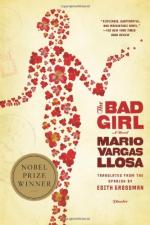|
This section contains 1,270 words (approx. 5 pages at 300 words per page) |

|
SOURCE: "Resisting the Big Guys," in The New Yorker, Vol. LXIII, No. 27, August 24, 1987, pp. 83-6.
Considered an extraordinary stylist and a perceptive observer of the human condition, Updike is one of America's most distinguished men of letters. Best known for such novels as Rabbit Run (1960), Rabbit Redux (1971), Rabbit Is Rich (1981), and Rabbit at Rest (1990), he is a chronicler of life in Protestant, middle-class America. In the following excerpt, he finds that Who Killed Palomino Molero? is a compelling portrait of racism in Latin America and of virtue amid pervasive corruption.
The Peruvian man of letters Mario Vargas Llosa is almost too good to be true; cosmopolitan, handsome, and versatile, he puts a pleasant and reasonable face on the Latin-American revolution in the novel, and, in such gracious public performances as his panel appearances in New York last year and in Washington this, makes everybody, even North Americans, feel...
|
This section contains 1,270 words (approx. 5 pages at 300 words per page) |

|


